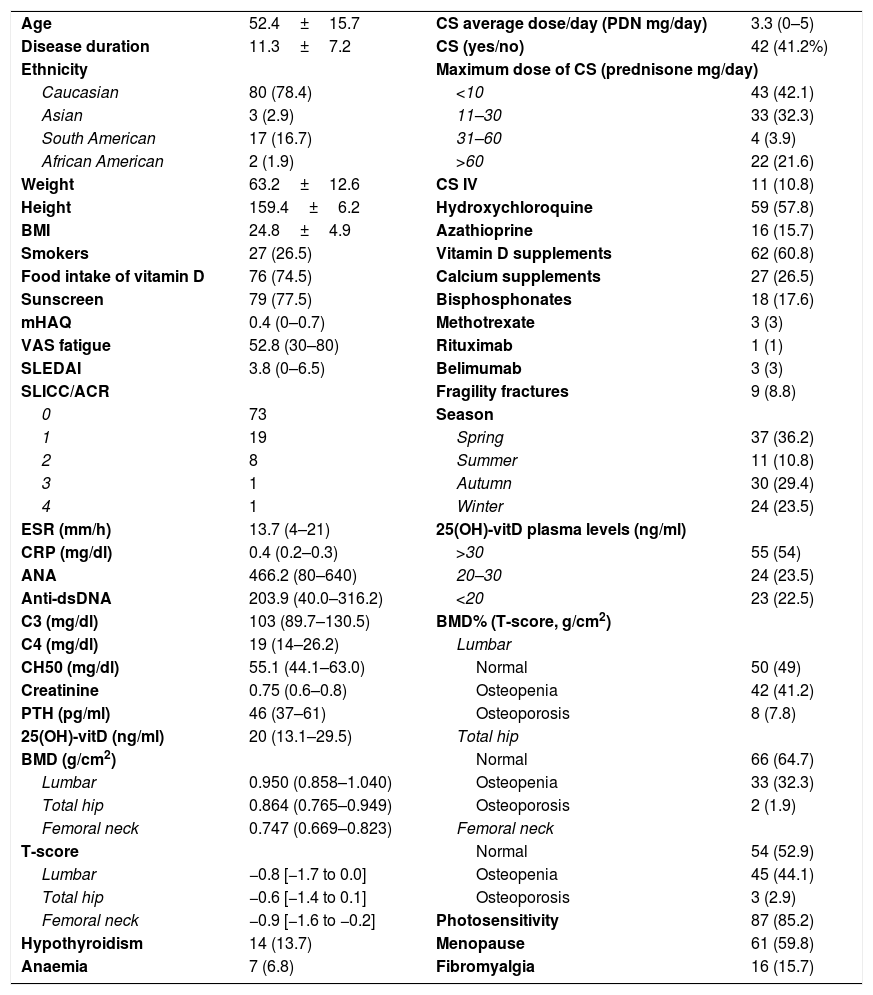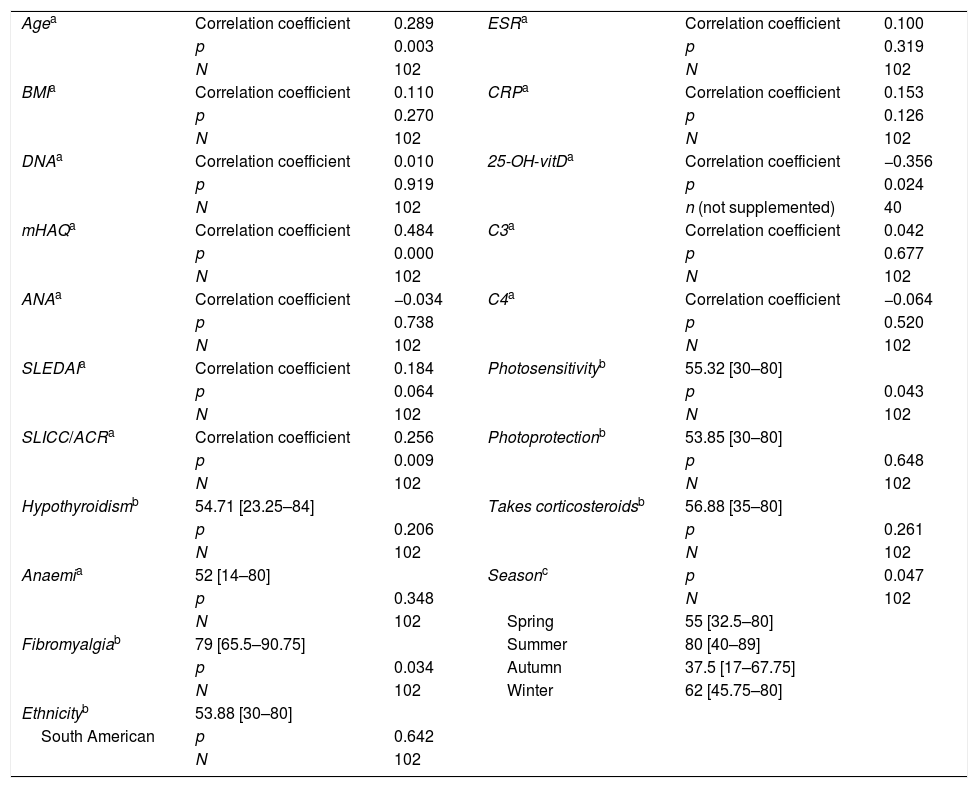To determine the prevalence of fatigue in our cohort as well as the factors to which it is associated, its relationship with demographic variables, vitamin D levels, treatment, systemic lupus erythematosus (SLE) symptoms and disease activity.
MethodsA cross-sectional study was carried out including 102 consecutive female patients with SLE (American College of Rheumatology 1997 criteria) who attended the Parc de Salut Mar between January 2012 and May 2014. Variables collected were: sociodemographic data, vitamin D supplementation, fatigue VAS, pharmacological treatment, main serological markers of SLE, and plasma levels of 25(OH)-vitD. The association between fatigue and the different variables was evaluated by the Spearman's Rho correlation coefficient for the continuous variables, the Mann–Whitney U test for the categorical and the Kruskal–Wallis test for the seasons of the year.
ResultsThe fatigue variable was evaluated through a fatigue VAS with a mean score of 52.84 (range 0–100), a median of 59 and a standard deviation of 29.86. A statistically significant relationship was found between fatigue and age, MHAQ, SLICC, summer and photosensitivity. As for the relationship between fatigue and vitamin D insufficiency (defined as 25-(OH)-vitD≤30 levels), the sample was divided into patients receiving vitamin D supplements (n=60) and patients without supplements (n=40), finding a significant relationship in that last group.
ConclusionsA statistically significant association was found between the presence of fatigue and age, MHAQ, SLICC, photosensitivity, fibromyalgia and summer, and with vitamin D insufficiency in the group of patients without supplements (n=40).
Determinar la prevalencia de fatiga en nuestra cohorte, así como los factores a los que se asocia, su relación con variables demográficas, niveles de vitamina D, tratamiento, síntomas y actividad del lupus eritematoso sistémico (LES).
MétodosSe realizó un estudio transversal incluyendo de manera consecutiva 102 pacientes femeninas con LES (criterios del American College of Rheumatology de 1997) que acudieron a la consulta monográfica de LES del Parc de Salut Mar, entre enero de 2012 y mayo de 2014. Se recogieron datos sociodemográficos, suplementación de vitamina D, EVA de fatiga, tratamiento farmacológico, principales marcadores serológicos del LES y niveles plasmáticos de 25(OH)-vitD. La asociación entre fatiga y las diferentes variables se evaluó mediante el coeficiente de correlación Rho de Spearman para las continuas, la prueba U de Mann-Whitney para las categóricas y la de Kruskal-Wallis para las estaciones del año.
ResultadosLa variable fatiga fue evaluada por medio de una EVA con una media de 5284 (rango 0-100), una mediana de 59 y una desviación estándar de 29,86. Se halló una relación estadísticamente significativa entre fatiga y edad, MHAQ, SLICC, la estación del año del verano y fotosensibilidad. En cuanto a la relación entre fatiga e insuficiencia de vitamina D (definida como niveles de 25(OH)-vitD≤30), se dividió la muestra en pacientes que recibían suplementación (n=60) y pacientes que no la recibían (n=40), hallándose una relación significativa en este último grupo.
ConclusionesSe halló una asociación estadísticamente significativa entre la presencia de fatiga y la edad, el MHAQ, el SLICC, la fotosensibilidad, la fibromialgia y la estación del verano, y con insuficiencia de vitamina D en el grupo de pacientes sin suplementación (n=40).








